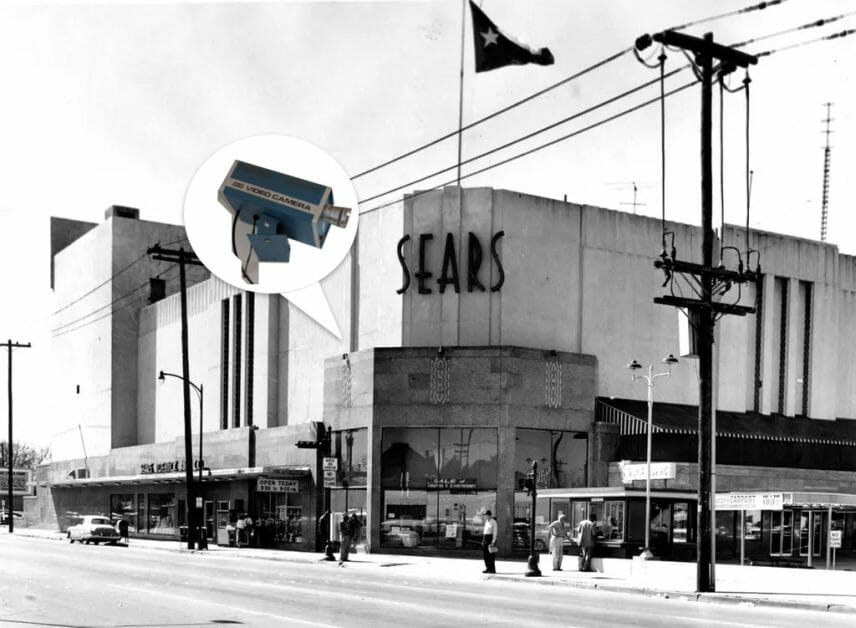When were security cameras invented? Though security camera history goes back much farther, the first security cameras that you would recognize today were invented in the late 1940s, but when were they first used for surveillance? Were going to cover all of these questions and more in our breakdown.
In general, the most widely accepted first-time security cameras were invented in 1927 when Leon Theremin first created a camera connected to a TV to monitor the comings and goings of the Kremlin.
If we are talking about the invention of the current-day home security camera, that is widely attributed to Maria Van Brittan Brown who filed a patent that was later accepted in 1969 which included remote control, peepholes, and door locks.
The Debate on The Word “invented”?
As is commonly seen with many inventions there is a debate as to who actually created the security camera. When we look at this debate we can choose to go all the way back and see who created something resembling surveillance with a basic camera and video device or we could choose to go further into the future and see a device that more closely resembles what we use today. For this article, we’re going to cover all of them and you can decide in your opinion crew the creator was dependent on your personal opinion or criteria.
The early 1900s
If we want to go back as far as possible we can see that in the 1900s people were already using cameras with long lenses for surveillance. Technically this could be thought of as the first recorded use of security cameras if we are talking about the word security camera literally.
One of the most widely documented first uses of taking photos for surveillance dates back to 1913 within a prison in the United Kingdom. The prison housed female inmates who were members of a group that was politically hostile to the government and refused to allow their identification and photos to be taken. Thus the guards worked out a system where they would take photos from a long distance without the inmates knowing and then use them for surveillance purposes.
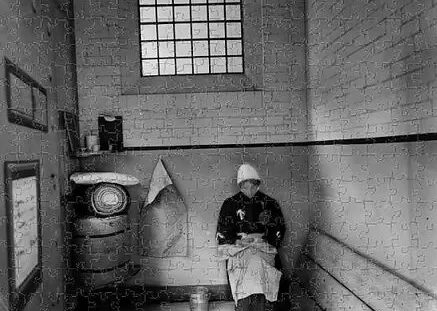
(Suffregists, Photos Were Taken From Distances)
Footage that could be recorded was more related to surveillance and cameras than it was to actual recordings.
1927 – A Tv and A Camera Are United
If we are trying to talk about something more akin to the cameras we see today with a live recording then the first security cameras invented could be attributed to the Soviets.
We have one of the first sightings documented of the use of these cameras in 1927. A scientist by the name of Leon Theremin created a system that would connect television and a video camera together which was used to monitor visitors entering and leaving the Kremlin in Moscow.
Though Leon was later arrested and sent to a Russian gulag his invention pivoted and grew from there. (1)
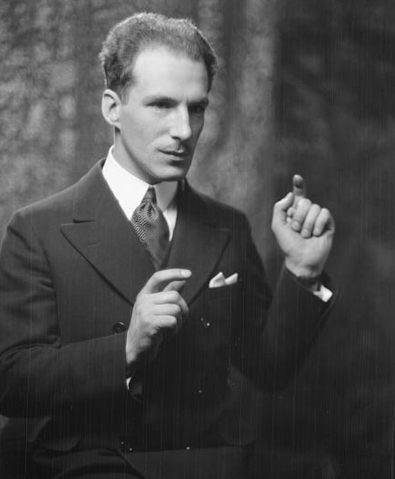
1925 – 1950 – World War 2 – Soviets and Nazis
Not to be outdone by the Soviets, years later in about 1942 which was nearly 15 years after the first Soviet CCTV system the Germans under the rule of Hitler created one of their own surveillance systems.
In 1942 Simons AG created this system in the Peenemunde airfield off Germany. It was used to watch the launch of V2 rockets. Interestingly enough the actual usage was not meant to be espionage-related but rather to protect people from possible injury during a rocket launch allowing them to remain far away while still being able to inspect the launch in detail.
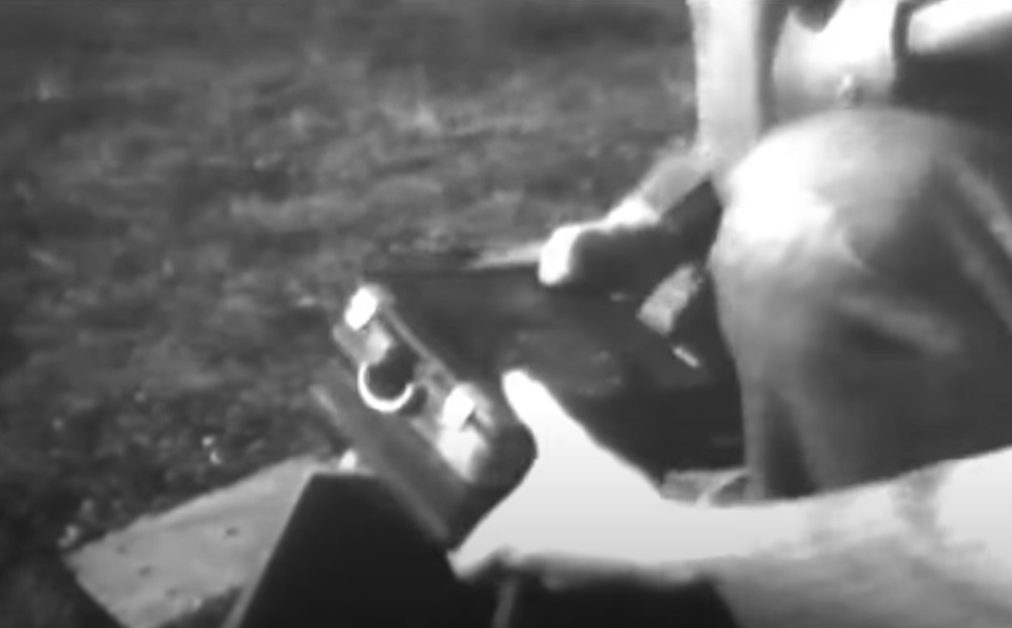
In 1949 a security government-contracted by the name of Vericon decided to start promoting an early version of CCTV.
Improvements in 1950
Coming up to the late 1950s the use cases for security cameras were very apparent, at this point the UK and Germany began to put together technology of what in modern-day times is the security camera we see.
The Germans were the first the actual CCTV system known as a closed-circuit television system while later on the British went on to improve on the system.
First Company and Normal Use 1950-1960s
As is commonly seen in technology developed for military purposes later it reaches the retail market. The technology of security cameras started reaching the retail market however it was much more expensive than what is commonly seen today and was only accessible by the largest companies that could afford it. Because of this when a company had a security system it had to pay someone to consistently monitor and maintain the feed.
Camera Sighting: In 1960 when the Thai royal family visited the UK security cameras were installed to monitor the streets during their visit for crowd control.
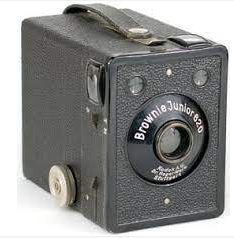
The first company is known for selling and displaying usable security cameras to shop owners and others in the 1960s. whilst another famous case was the city of Olean in New York which installed video surveillance systems to monitor their streets to lower and stop criminal activity.
Camera Sighting: In 1964 in Liverpool police tested adding four hidden cameras to the streets to reduce crime.
George Orwell
We would be doing a disservice if we did not mention George Orwell for those that don’t know he is the author of the famous book 1984 which predicted a future where we would all be under surveillance by the government through a type of video surveillance system. Interestingly enough this book was written in 1949 right before this actual technology started to take off in the lives of normal citizens.
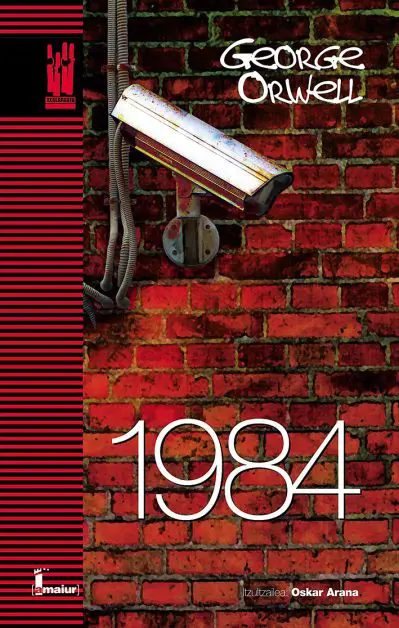
First Commercial Use (Sears)
Here’s some interesting history that will never be forgotten. Although we’re sure there were other cases where security systems were installed for commercial areas this is the most recorded and famous case so it has not fallen through the cracks of the history books.
In late 1968 a department store owned by Sears was consistently broken into and robbed, the staff thought of many different ideas to stop the robberies including setting up a guard dog or paying multiple security guards but they decided this would not help.
After multiple complaints and suggestions to the owner, an idea for a pilot project was proposed this pilot project would include eight security cameras installed all around the department store. The project was later approved and unfortunately, it would go on to cost much more than the guard dog idea, how much more do you ask well the project in total took nearly 2 years to complete and cost approximately $1.5 million which accounting for inflation today would be over $15 million!
Back in the day, the most important part of the security system was the monitoring, since the recording technology was not that great it was better to have a team consistently monitoring the cameras. For these particular eight cameras, they were monitored 24 hours a day and seven days a week by the local police department, and by the end of the decade, the setup was visited by hundreds of different police chiefs from all around the country to see if it was a viable pilot project for other cities.
First Residencial Patent – Marie Van Brittan Brown
The first residential patent was given to Maria Van Brittan Brown who we can argue created the first residential security cameras. The patent was a 4 peephole system connected to monitors within the home.
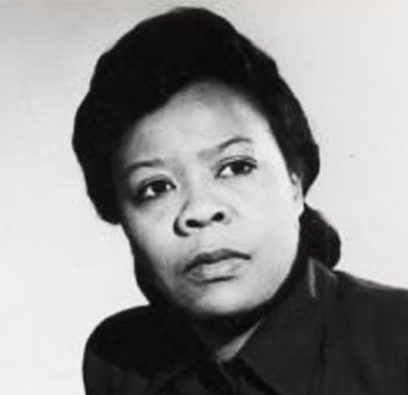
These peepholes were connected to monitors within the bedroom, you could also use a microphone to communicate with people outside kind of like an older version of the ring doorbell camera.
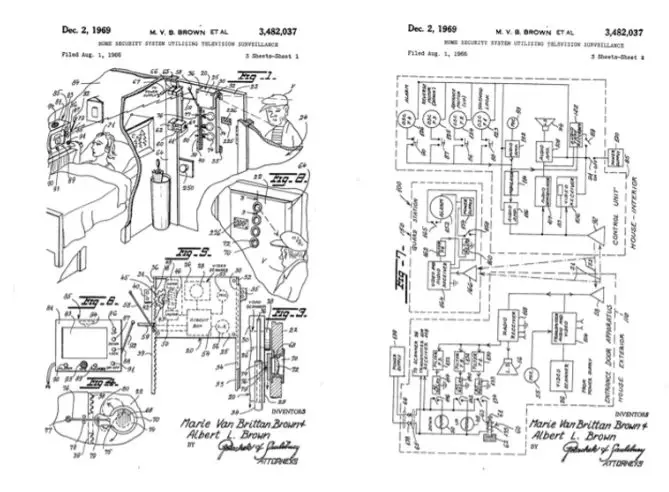
1960-1990s + Growth and Improvements
Later in the 1960s, just like the advent of computers, surveillance technology started to become more accessible to the average person, however, it was still incredibly expensive and the majority of use cases were from the city or government that could afford large investments. You started to see the technology more in different areas including city centers, embassies, manufacturing areas, railways, and many other areas that were prone to large amounts of visitors or extremely important visits.
Videocassette Recorders Arrive (1972)
In the first video cassette recorders came into production, this made it incredibly easy to get videos recorded and be able to switch tapes and conveniently conserve footage. This was one of the biggest leaps in technology for what is now seen as essential features in modern-day security cameras. After the video cassette recorders became public it became much more feasible for smaller commercial locations to take advantage of this technology.
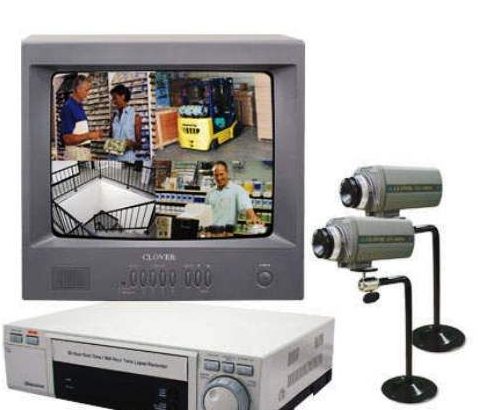
With the advent of the cassette recorders, we began to see the expansion of security cameras in more commercial areas, especially in regard banks or department stores which commonly had thefts occur.
The cost to record also went down because you no longer had to pay someone to consistently monitor the footage because now you could take a VHS tape and a VCR and conserve that footage later using it for evidence.
1980’s Low Light Sensors Are Introduced
The 1980s were known as the lowlight revolution in security cameras, what we commonly use as CMOS sensors were first invented in these sensors allowed different security cameras to be able to see much better in lowlight conditions. This was a huge change from the quality we would get before which was incredibly grainy and almost impossible to distinguish at the night.
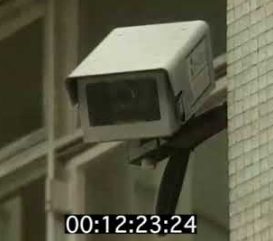
Digital Revolution: 1990+
The 90s were perhaps one of the largest booms in security camera use. One of the biggest inventions of the 1990s was the digital multiplexer.
What the digital multiplexer allowed you to do was to view different signals from different cameras and display them on one screen this would allow you to record all of these on one tape whereas before you would have to have a recording device built into each camera. Obviously back in the day, these were much larger and harder to implement so having to have a recording device within each camera meant that most of these cameras were very cost-prohibitive to the average user.
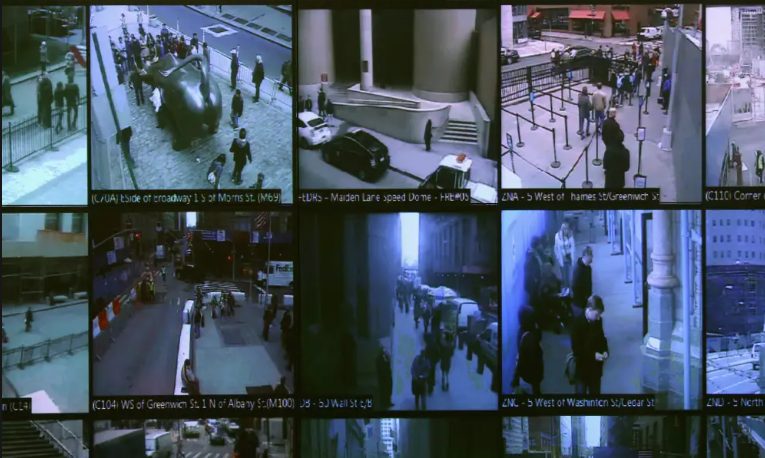
Allowing these cameras to synchronize and have all of their recordings on one tape meant that now the average person was able to afford a security camera and install them in their residence or place of business without incredibly high costs, grant you they were still fairly expensive limiting the accessibility to middle or upper-class homes or commercial businesses.
Another huge innovation of that time was the motion-activated recording feature. This also meant that the pricing decreased since the amount of memory that these cameras would take was greatly reduced because of the fact that they would only record upon motion activation. Where before you would need massive amounts of tapes of recordings this cut down the number of recordings needed to 11/10 of what had previously been used especially in less popular locations allowing home use to be much cheaper.
Later in 1996, the first use of the Internet protocol cameras happened. These cameras allow you to access your camera through the IP protocol which allowed you to view the camera life. The innovator of this technology was Axes communications and the camera was called the axes net 200.
World Trade Center Attack
The last push at the end of the 1990s for security cameras actually came from a tragedy. we all remember the World Trade Center attack and how it led to massive increases in security from airports to businesses and to other areas. This uptick in fear and security use led to a huge boom in the use of cameras and the adoption of them throughout the US.
What’s next for security cameras?
Facial Recognition Ai
Recognition is becoming incredibly popular and has sparked a huge debate over governments and whether they should be allowed to use this software. Nowadays a security camera that is in a city within the United Kingdom or the United States and picks up a face can easily match that face to a massive database of faces throughout the world this can quickly identify who was at what location at which point in time. The accuracy of this software is incredible and one can find faces even from some of the most hard-to-see angles. This is sparked massive privacy concerns and debates.
Doorbell Monitoring
AdVent of companies like the ring doorbell has made it very popular for houses to have permanent doorbell monitors that allow them to monitor for package theft and be able to see who is at the door even when they are not home.
Drone Security Cameras
one of the biggest upcoming changes in monitoring drone cameras. The viability and the strength of these cameras are becoming stronger each day to a where now you can see perfect footage from large distances. The issues with privacy and these drones being massively adopted have led to many new laws being taken into consideration and implemented in different states.
Security Camera Apps and Alerts
One of the most innovative pieces of security camera tech has had to be the connection between applications on your phone and your security cameras whereas before the bandwidth and the strength to be able to fully monitor from your phone was not always viable now you can have a perfect feed and monitor from your home to your phone that also provides alerts dependent on different flags.
Two-Way Audio
Another innovation has been two-way audio where someone can communicate directly from their security camera to the person on the other side.
Hidden Security Cameras
One of the ethical concerns that have become more vocal is the use of hidden security cameras for example security camera’s in teddy bears the spy on your nanny or security cameras within watches during meetings. During these debates, there have been many new laws that have come into place to figure out whether it is legal or ethical to record someone when they are not cognizant of your presence.
Take a look at some of our related articles below.
- What to look for when buying a home security camera system
- How long do wireless security camera batteries last
- Best self-monitored home security system
References
(1) Leon Thermin – https://www.smithsonianmag.com/smart-news/theremin-100-years-anniversary-instrument-music-history-180976437/
(2) Marie Van Brittan Brown – https://lemelson.mit.edu/resources/marie-van-brittan-brown
Video Reference

